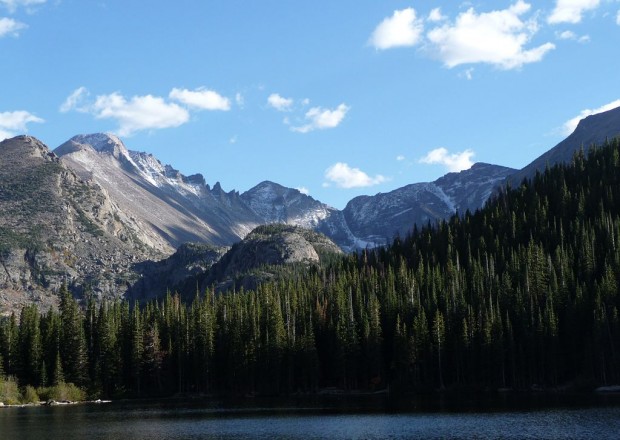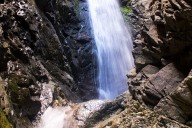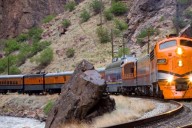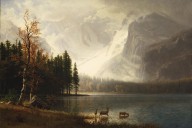Rocky Mountain National Park is a breathtaking area covering 415 square miles of land. The expanse of terrain has great variety, including snow-capped mountains, rivers, mountain lakes, grassland, tundra, and evergreen forests. The Continental Divide runs through the park, separating the wetter, forested west, from the more mountainous and drier eastern side. Tree types throughout the park contain ponderosa pine, douglas fir, Englemann Spruce, and Subalpine Fir. Above 11,500 feet, the forest disappears, and is replaced by alpine tundra.
The park is so large that it has five different visitor centers, and over 300 miles of trails! The trails reach throughout the park, leading you past some of the 150 lakes, and 450 miles of streams. A great number of wildlife live throughout the park. Their numbers include black bears, mountain lions, moose, mule deer, bighorn sheep, and smaller animals such as pikas and marmots. One of the area’s most popular draws is the elk rut each autumn.
The main attractions of the Rocky Mountains is in fact the mountains. Longs Peak is one of the most prominent in the park, being the tallest (at 14,259 feet), and visible from many vantage points. Every year thousands of people attempt to scale the mountain, with varying levels of success. Another popular spot is Bear Lake, which lies below Hallett Peak and the continental divide.
With so many trails, hiking and backpacking are of course popular activities, but most of these trails also allow horseback riding, if you’d rather enjoy that activity. During the summer months bicycling is permitted on the park roads, with a $10 weekly permit. Several of the lakes in the park are open to fishing, with a full 16 different species of fish. During the winter, snowshoeing, cross-country skiing, sledding, and tubing are all excellent activities. Other things to do at the park can be found here.
The park is open every hour of every day of every year, and visitors can come and go at any time. Please note however that certain roads may be closed at times due to flooding or snow. Entrance to the park is $20 per vehicle for a one week pass, with annual passes also available. Certain days of the year offer free admission, so check here before planning a visit. For information regarding camping and other permits, click here.


















No Comments